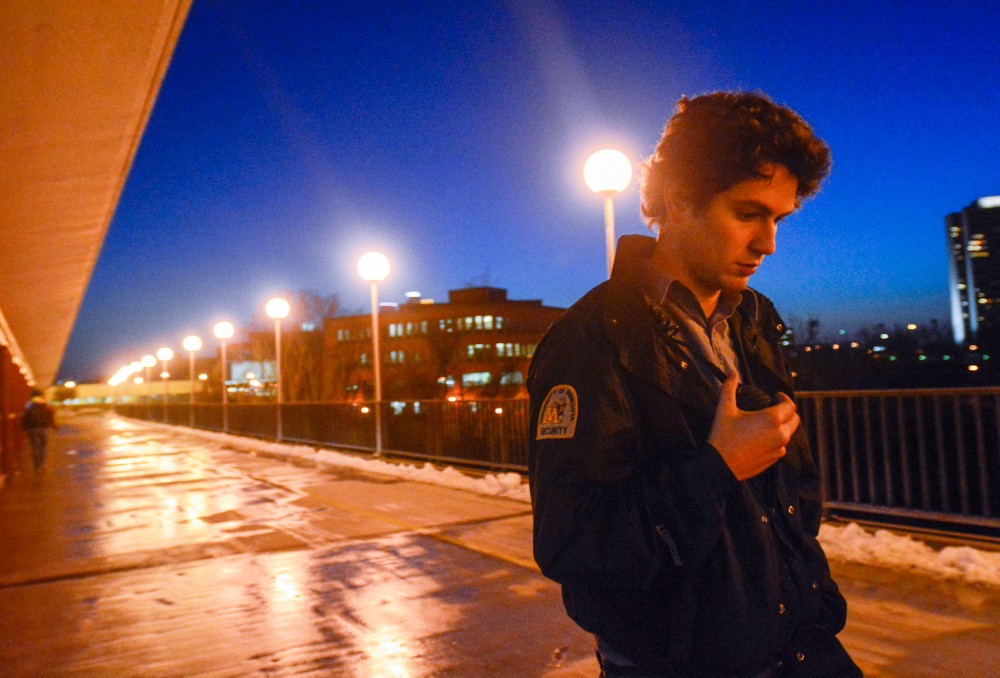When a student is in crisis on the Washington Avenue Bridge, the task of talking them off the ledge often falls to student security monitors.
With far more security monitors on campus than police officers, the monitors are often left in charge of high stress situations, like reports of a potentially suicidal student. On average, University Security gets those reports from student monitors once every month or two, according to a student monitor who requested anonymity because they weren’t authorized to speak to the media.
A monitor who also asked to remain anonymous for the same reason, said worrying about bridge incidents is the most stressful part of their job, even though they’ve never experience one.
“I know some people wanted to quit after this,” they said. “If something extreme happened I might quit. It’s not worth ruining my mental health over.”
The monitor said they have responded to two students showing warning signs, but neither was considering self-harm. They said it is common for monitors to find students in crisis.
They said monitors do not discuss these encounters with each other in detail to maintain confidentiality.
Monitors get two-part training on “how to handle” distressed students on the bridge and “how to know it’s not your fault” if they cannot dissuade the student, they said.
“You look to either side to see if anyone is standing there, hesitating or looking sad,” they said.
If they see such a student, they approach them and start a conversation to assess the situation.
Security monitors patrol or monitor the bridge all hours of the night in one-hour shifts. During extreme winter weather, they can watch the bridge from a nearby building instead of walking it.
Monitors can also opt out of street shifts and bridge patrol. Additionally, they may be called from bridge patrol to escort students through the 624-WALK program.
Krista Lindgren, a University security monitor, said she has helped three students in crisis on the bridge.
One ex-security monitor who requested anonymity for employment reasons said they helped a distressed student when they were still in training. The monitor and their trainer spoke with the student until they could flag down University of Minnesota Police Department officer to take him home.
The monitor said after this encounter, they felt proud and capable of helping others in the future.
UMPD Lt. Chuck Miner, said monitors are in frequent contact with police because they use the same radio channel.
This, paired with their high numbers, makes them the “eyes and ears” of UMPD. He said there are almost 150 security monitors and 52 officers.
Bonnie Klimes-Dougan, a University psychology professor, said the program should have a two-part training similar to the one in place. The best training partner would be the University’s Behavioral Consultation Team.
She also said program managers should debrief with monitors after crisis events.
“There are concerns about them being adequately trained and supervised so that they can help but also have minimal harm to self,” she said.
Therapists who can’t prevent their clients from dying by suicide often face subsequent mental health issues, and the same could apply to student monitors, Klimes-Dougan said.
She said incorporating police and campus security in crisis management is critical, but this could create additional stress for monitors.

















